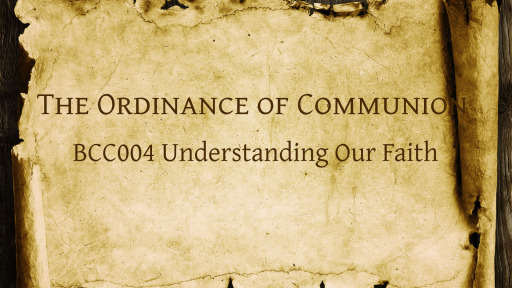BCC004 The Ordinance of Communion

Terms & Definition
How did we come by Communion?
What does Communion Signify?
Body and Blood
The night that Jesus instituted Holy Communion, he redefined the elements of the meal. The bread and wine stood for centuries as reminders of the lambs slaughtered on that first Passover. But Jesus revealed what even that first Passover signified: his body broken and his blood shed for sin. In the simple act of eating and drinking, the disciples were to remember that Christ our Passover Lamb was sacrificed (1 Cor. 5:7). He sacrificed himself “for many for the forgiveness of sins.”
Nourishment
Jesus continues to be the food that nourishes Christians
This means, in part, that the Lord’s Supper belongs to the weak Christian. No one comes to the Table in unblemished worthiness or undiminished strength. We come to the Table in need. We come to the Table fresh from battles with sin, discouragement, unbelief, and the world. We need to be fed again. We need to receive the sustenance that Christ affords. By faith we receive the nourishment we need
Participation
Unity of the Church
The Lord’s Supper and His presence
Difference between sacrament and ordinance:
Real Physical Presence
Memorial View
Spiritual View
When we behold and partake of the elements in Communion, we receive by faith all that they signify regarding the broken body and shed blood of the Lord Jesus Christ. By faith, Christ joins us at the Supper, and we anticipate the day when faith gives way to sight and we eat with the Savior in the Father’s kingdom (Matt. 26:29).